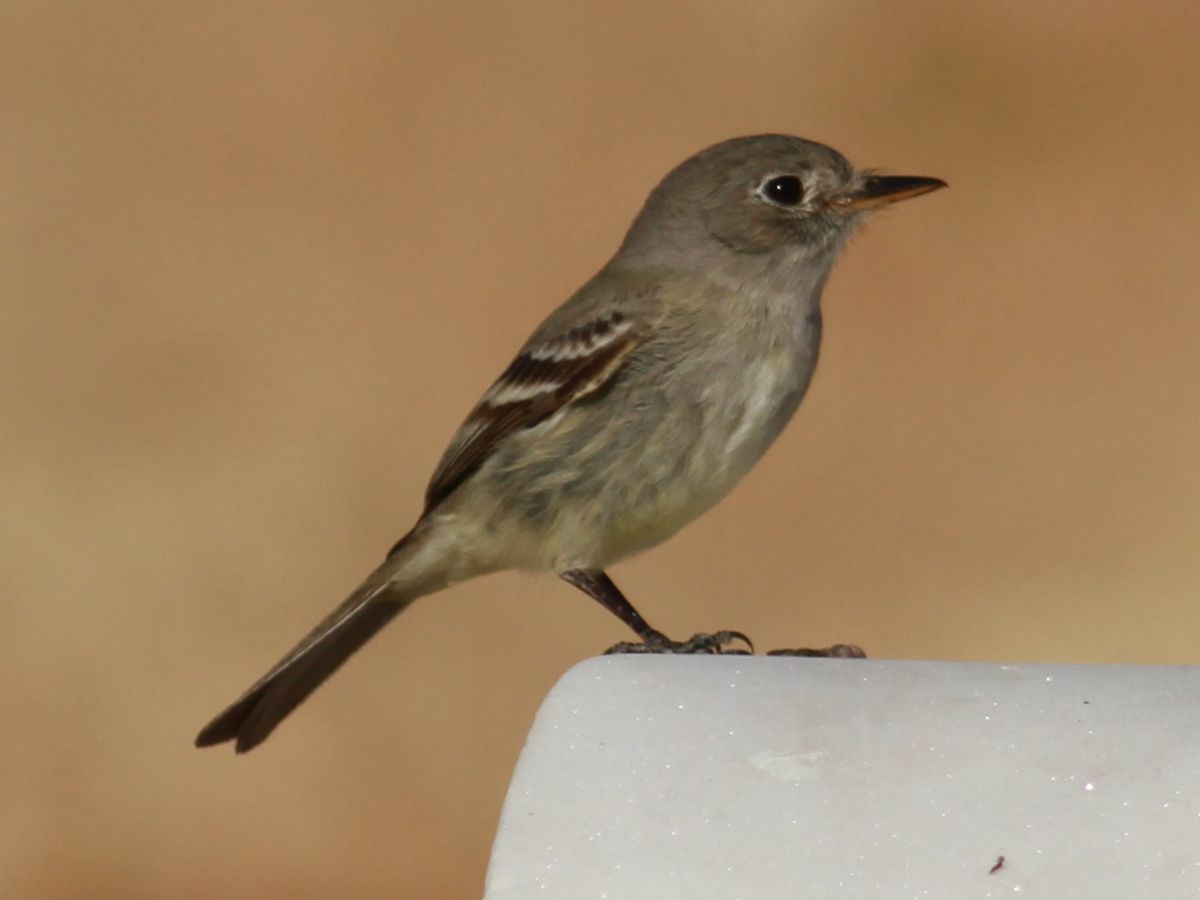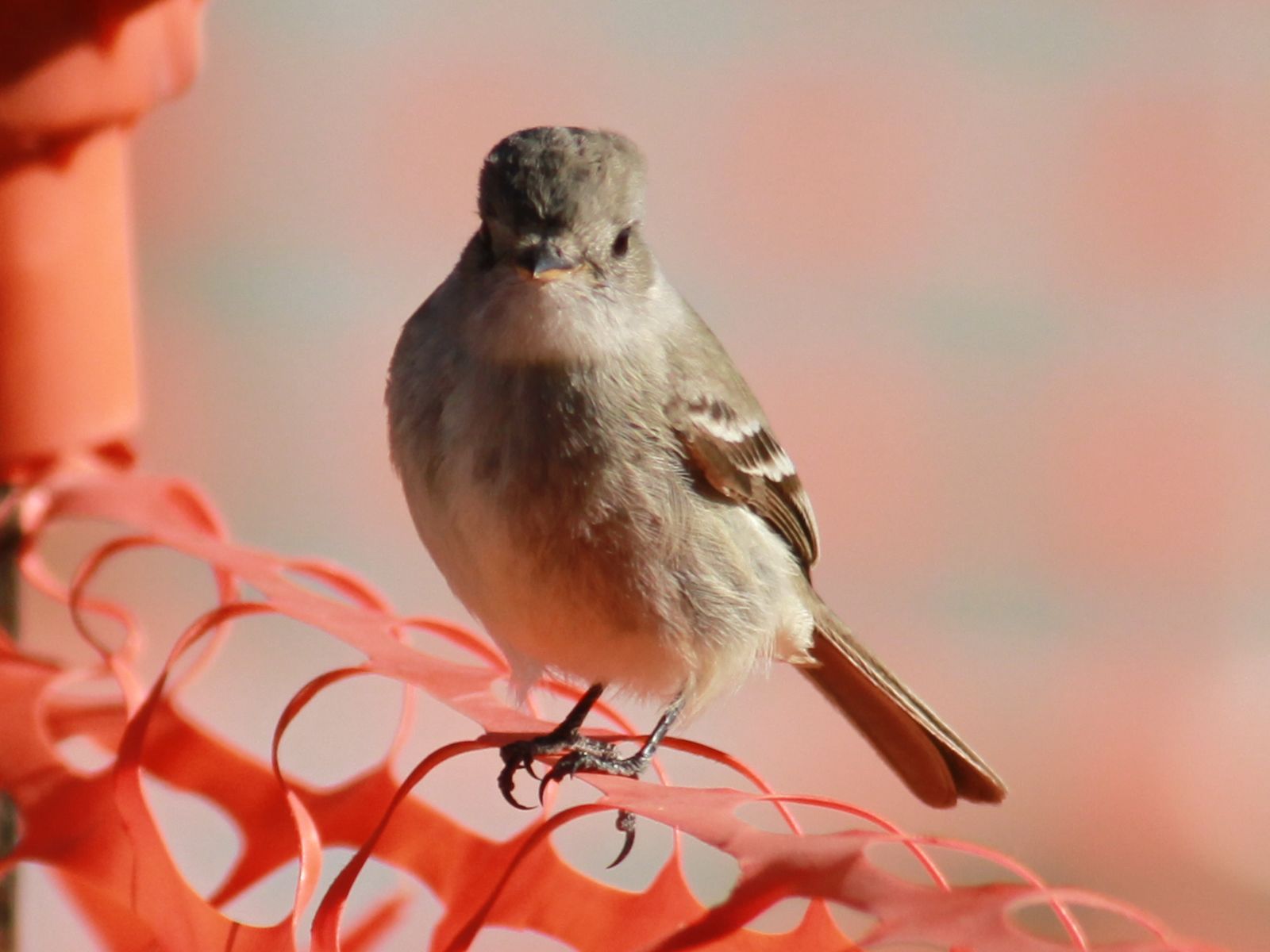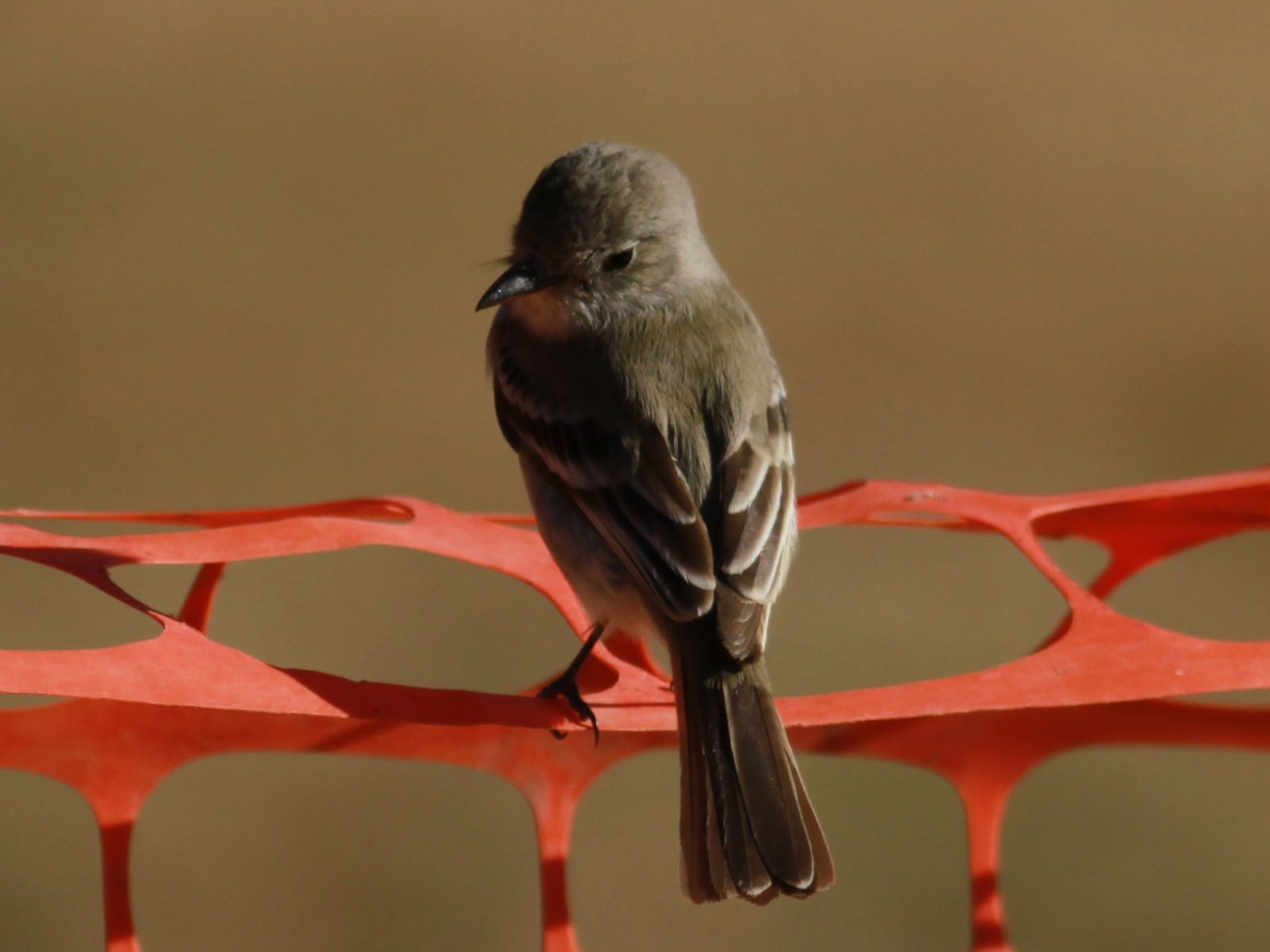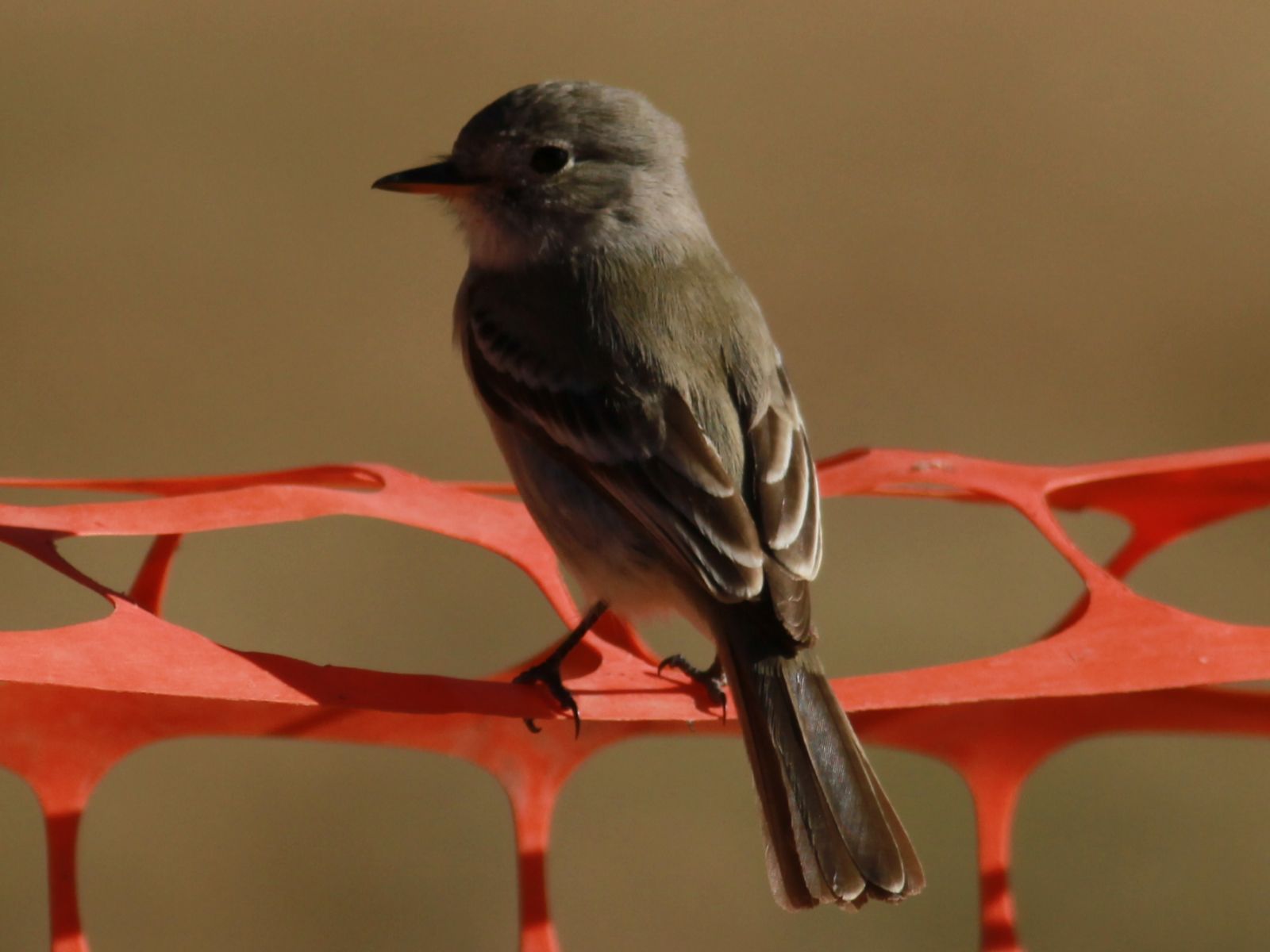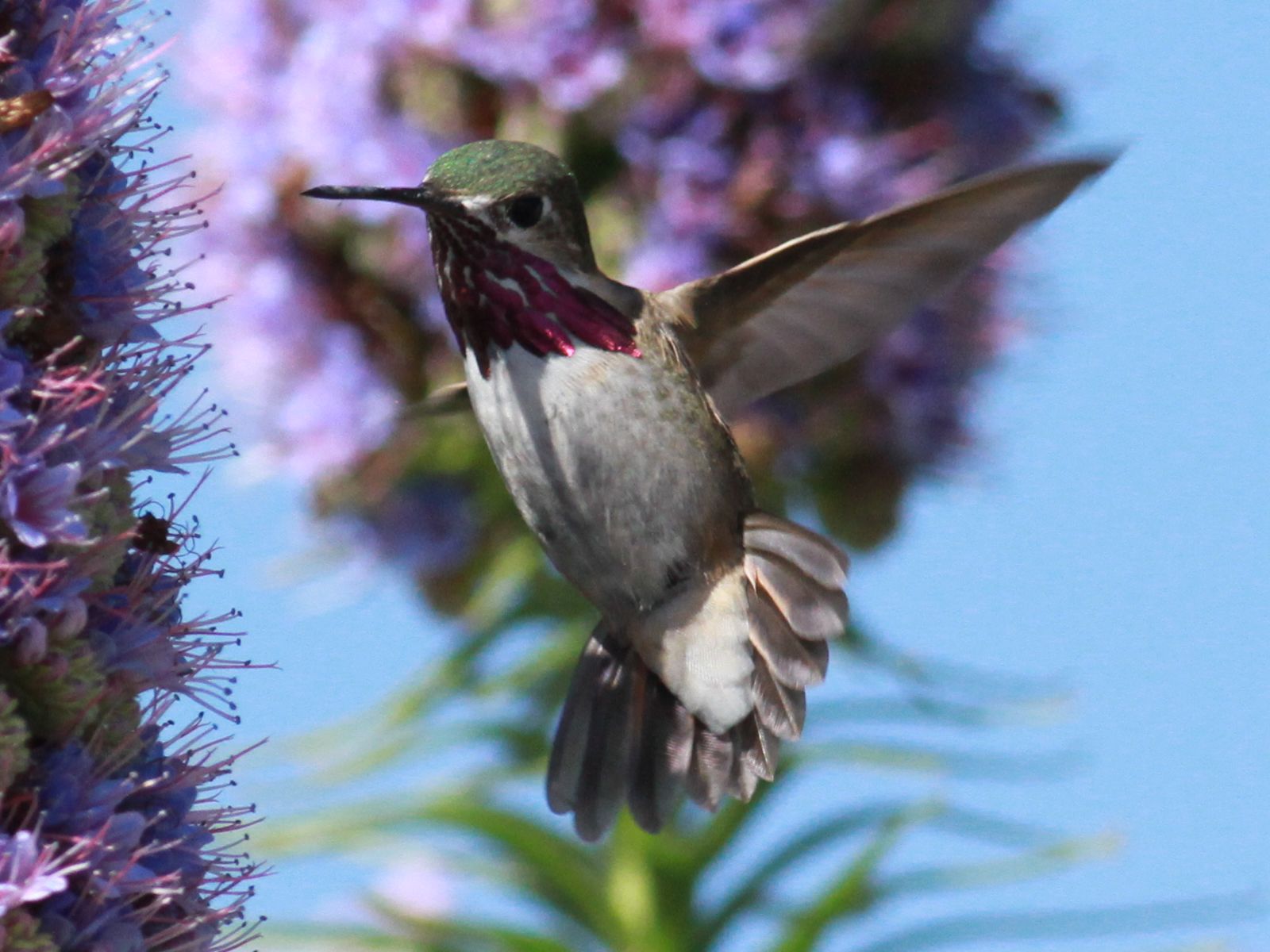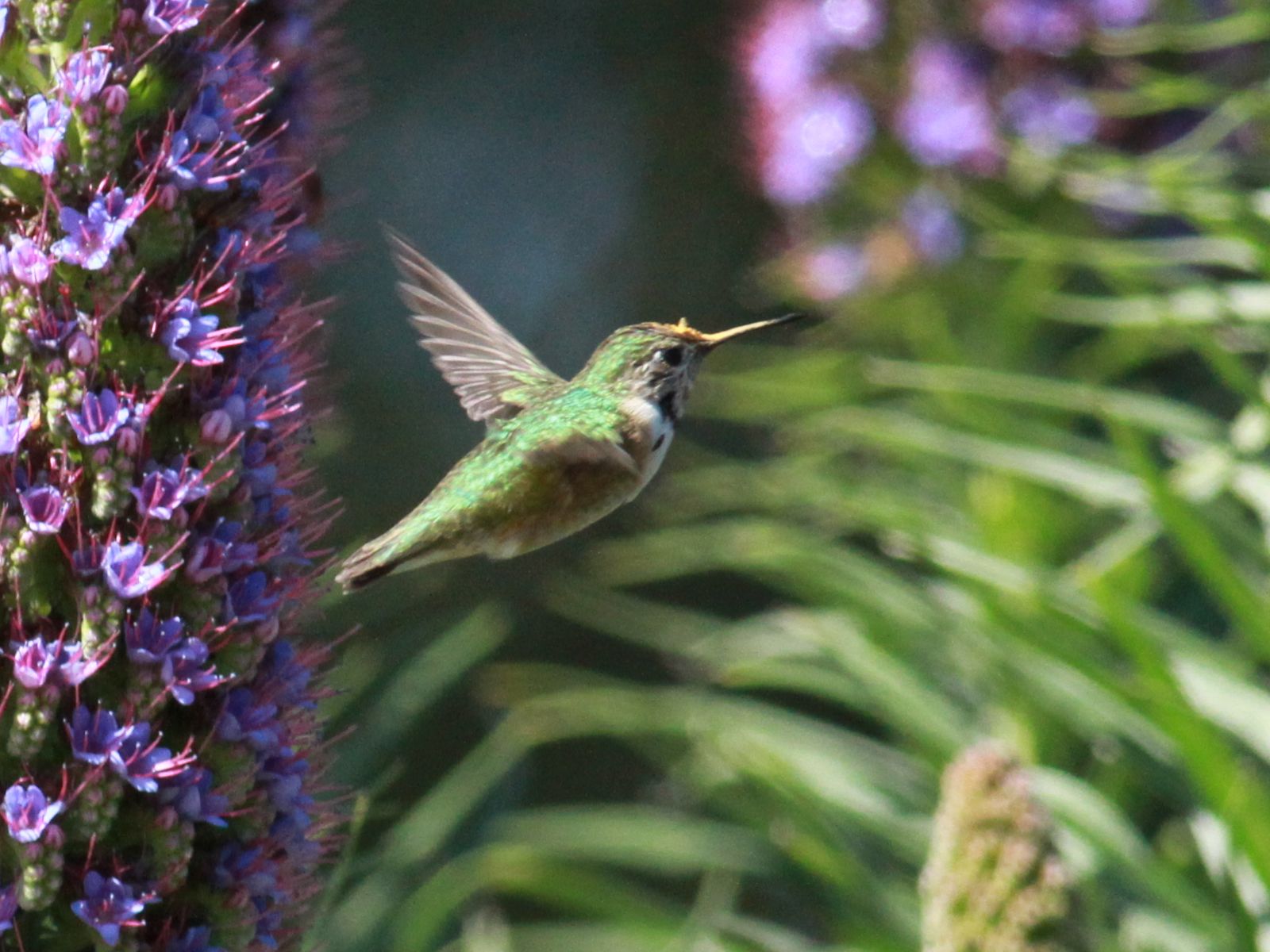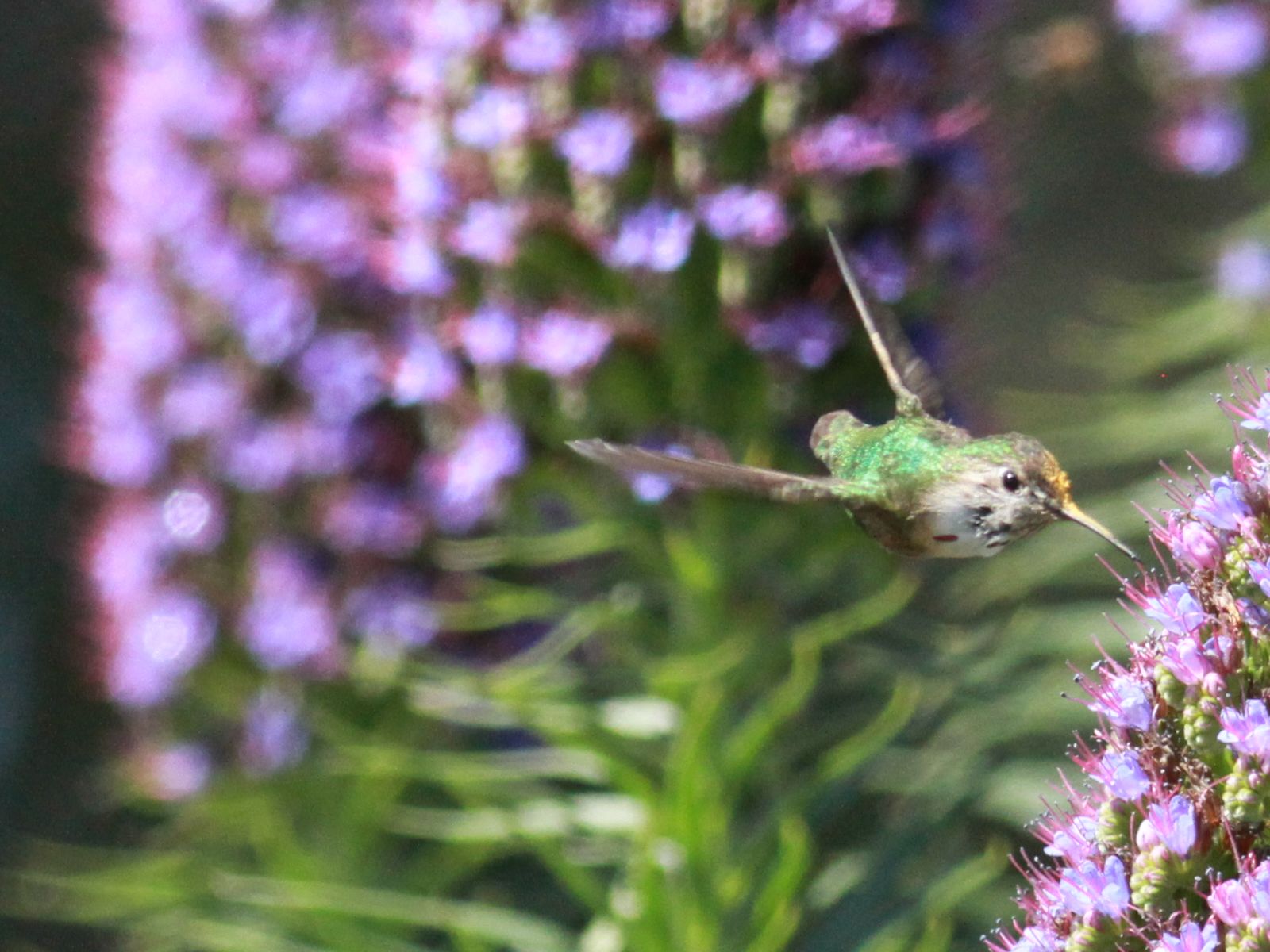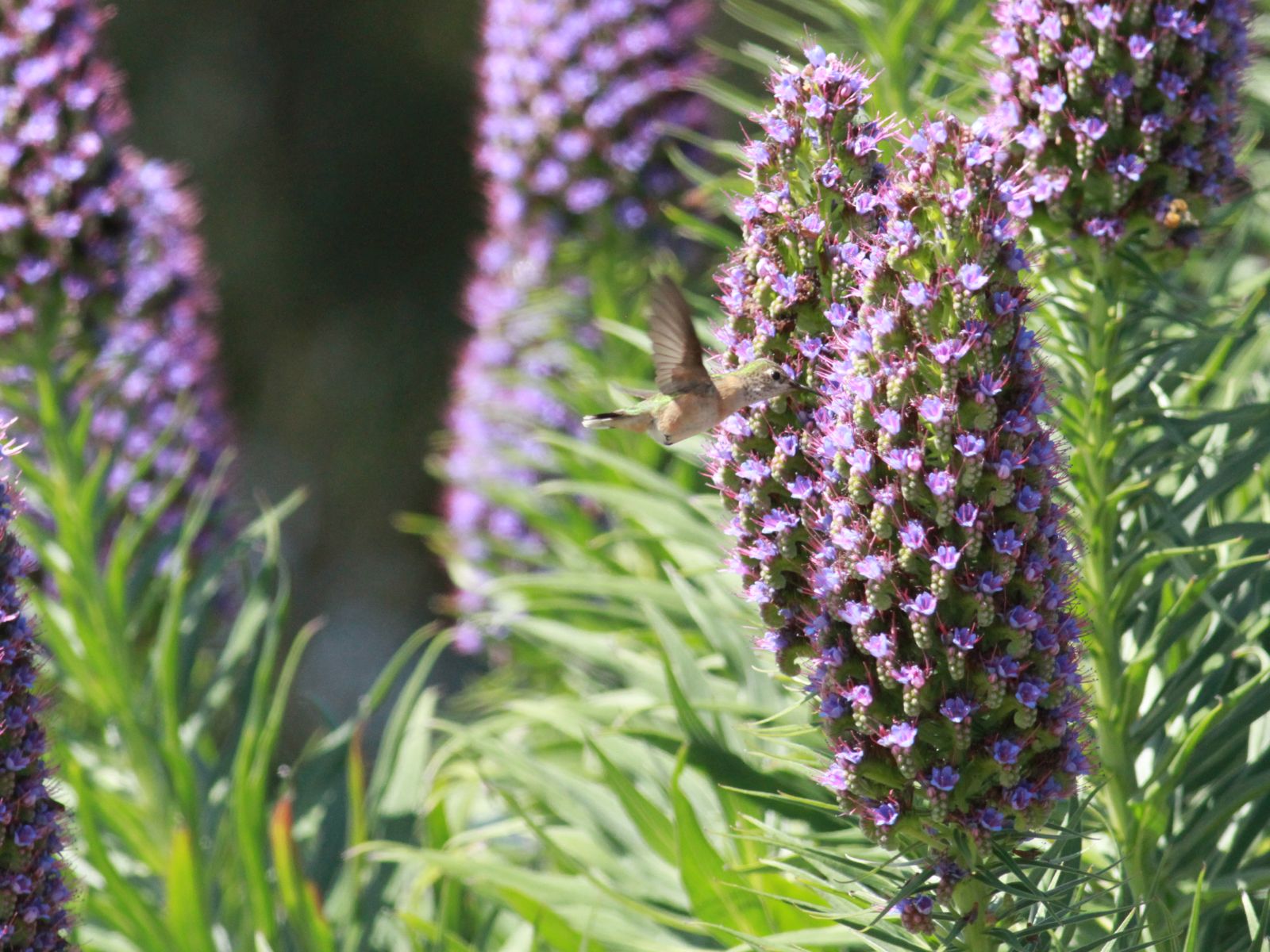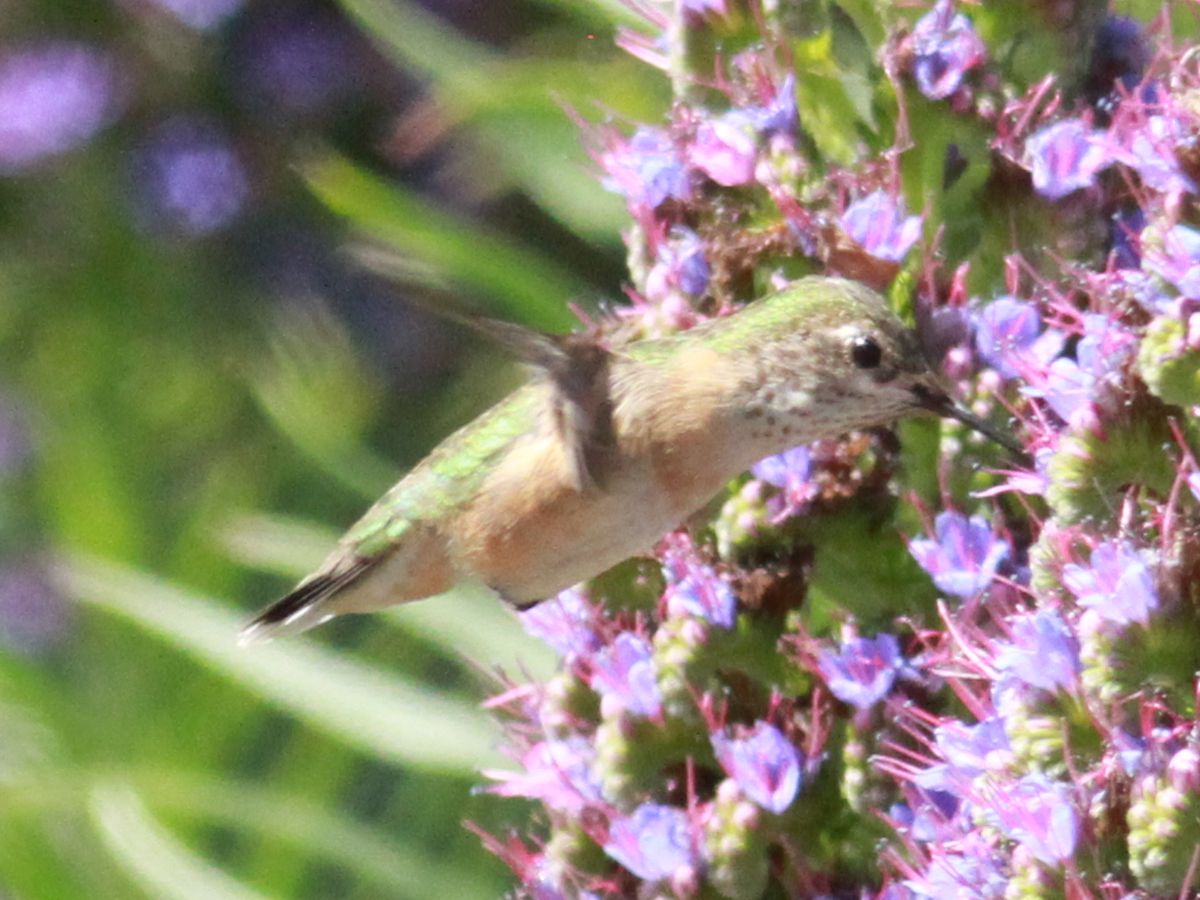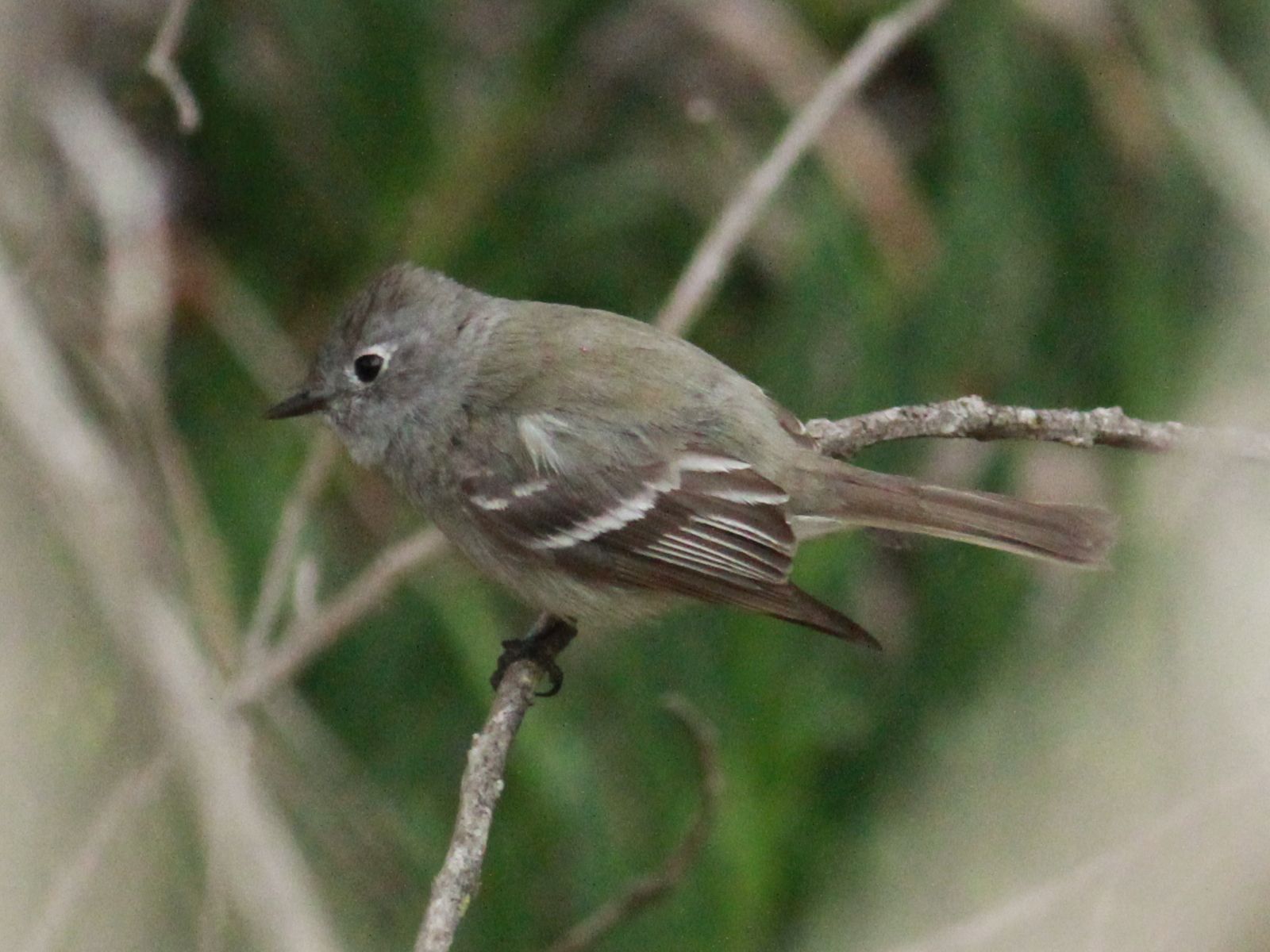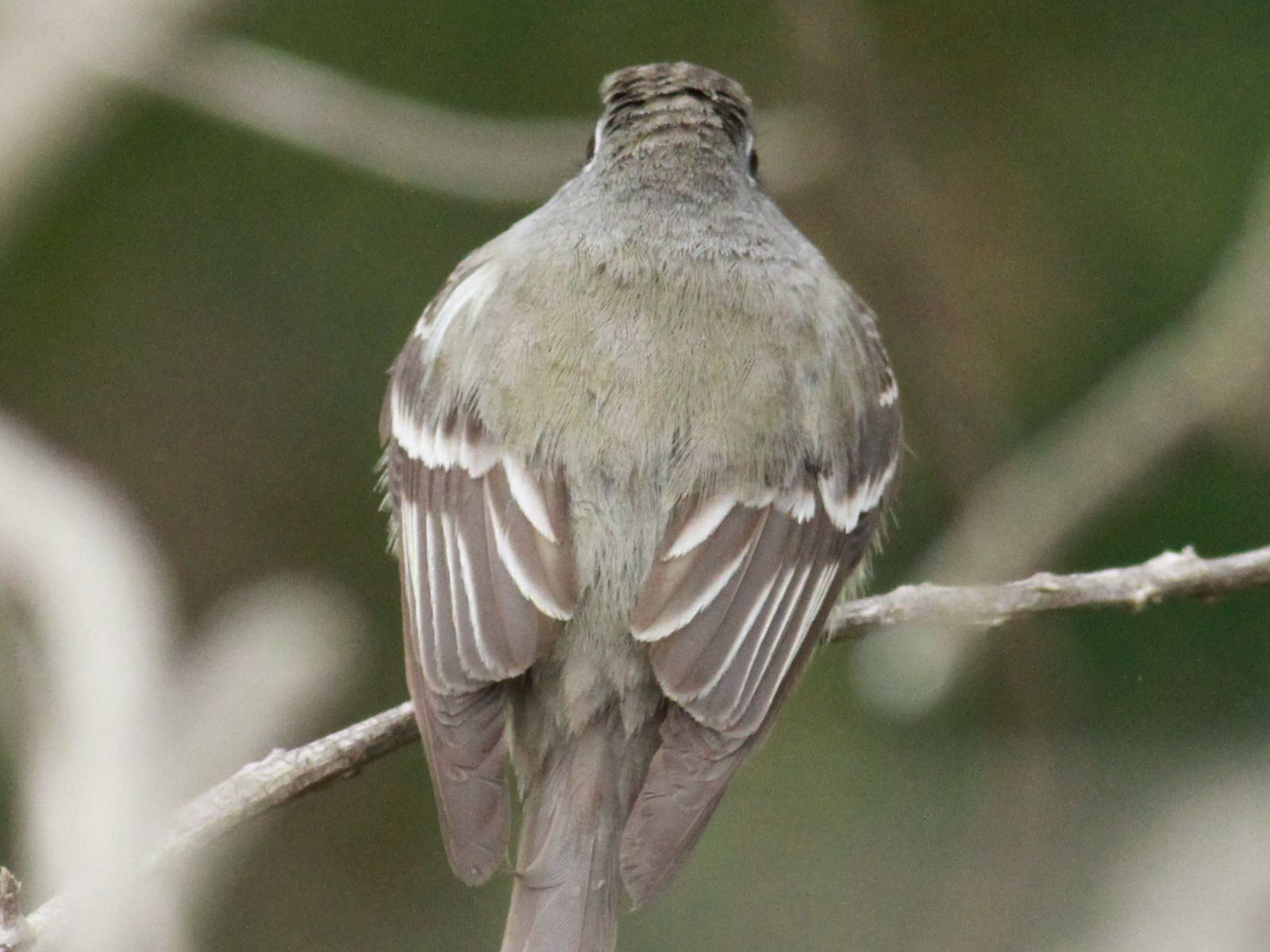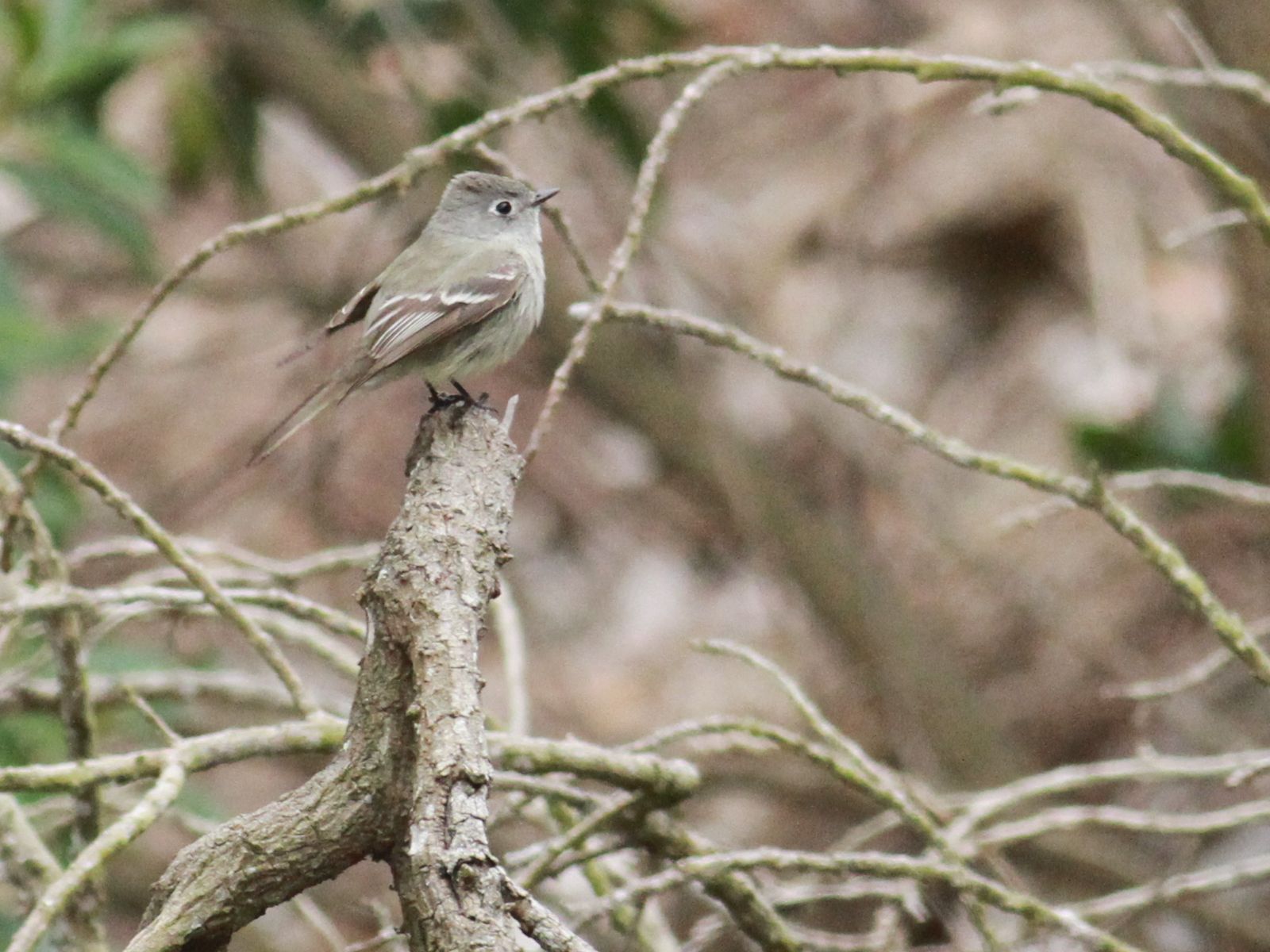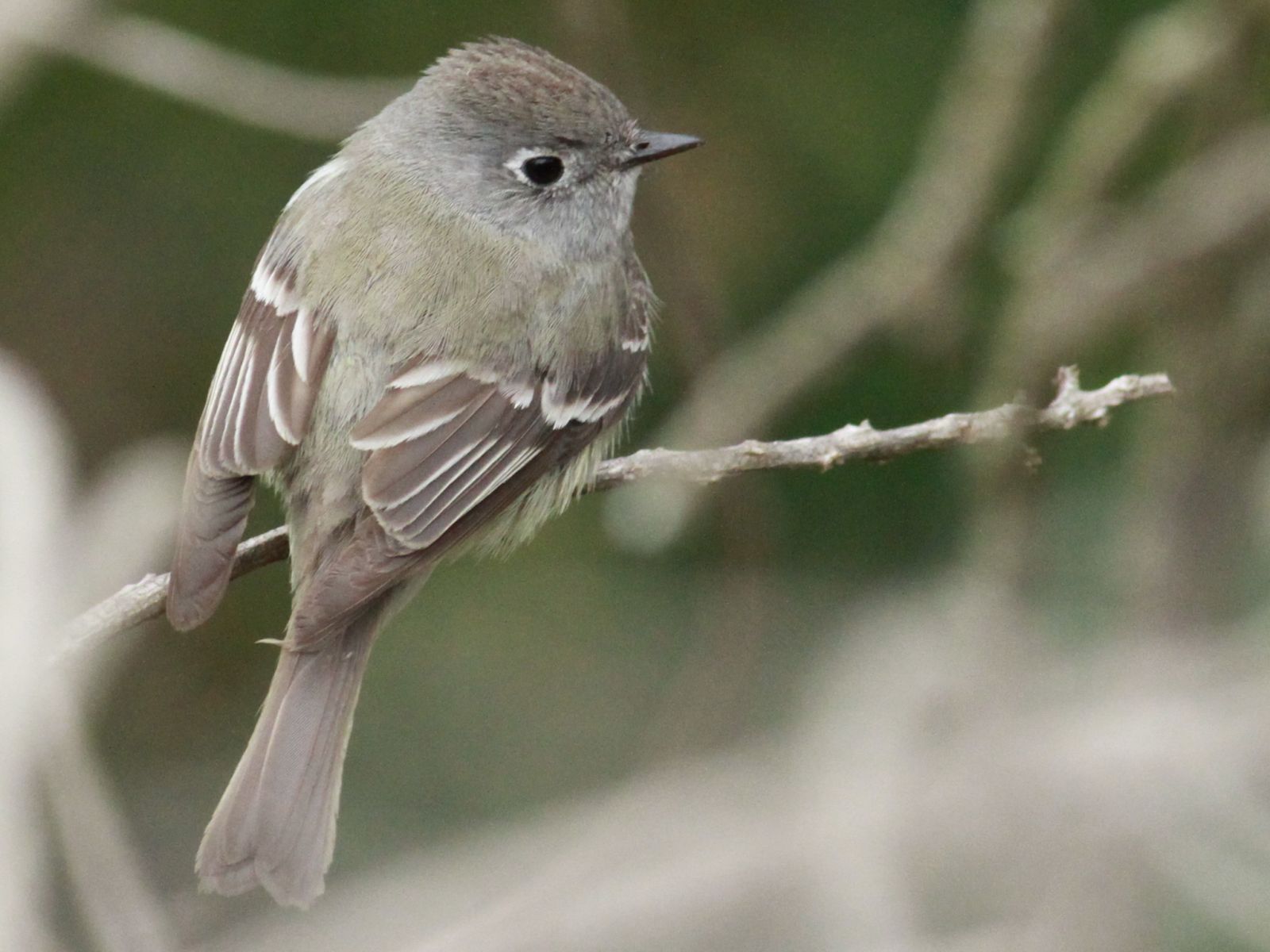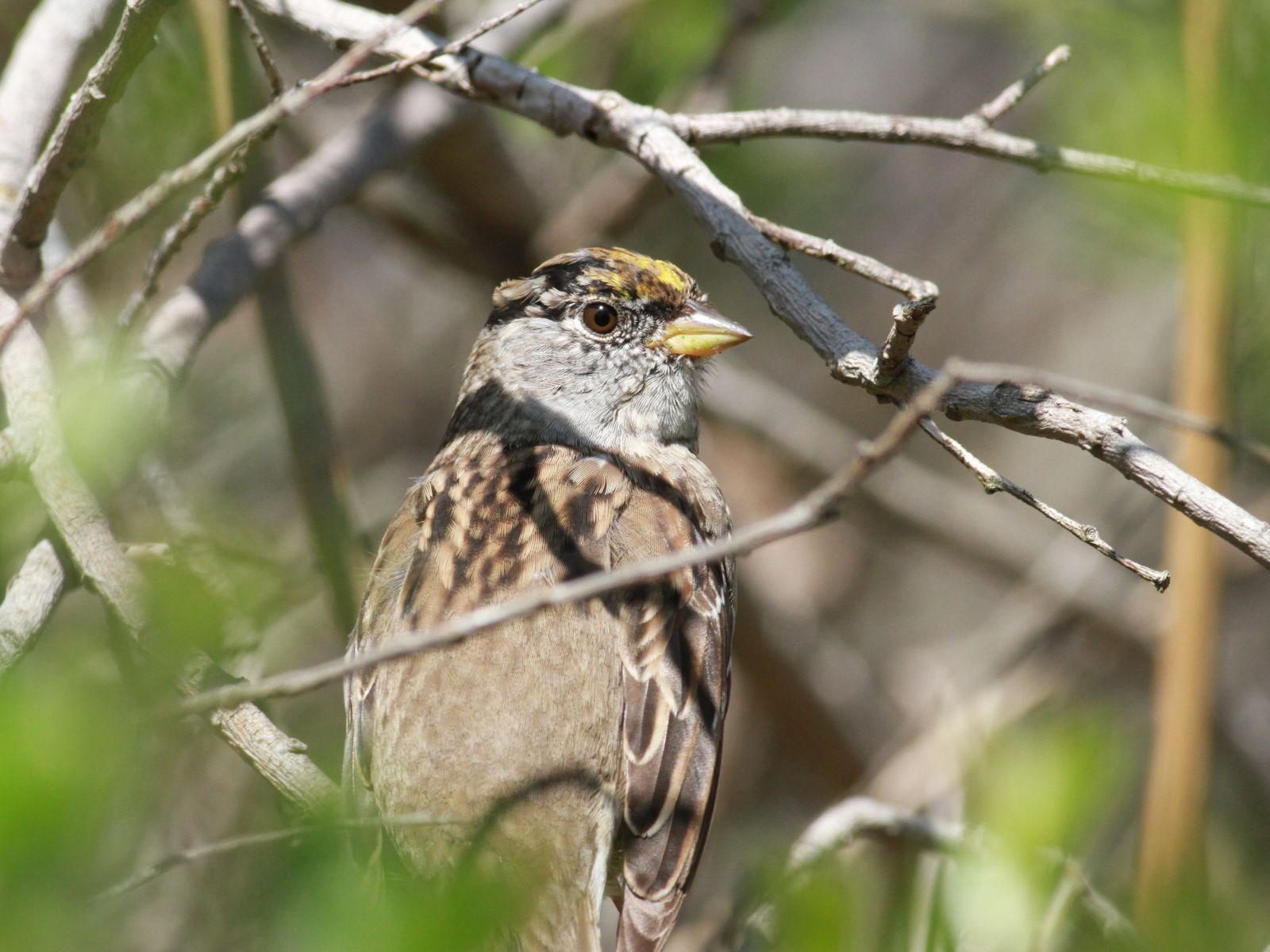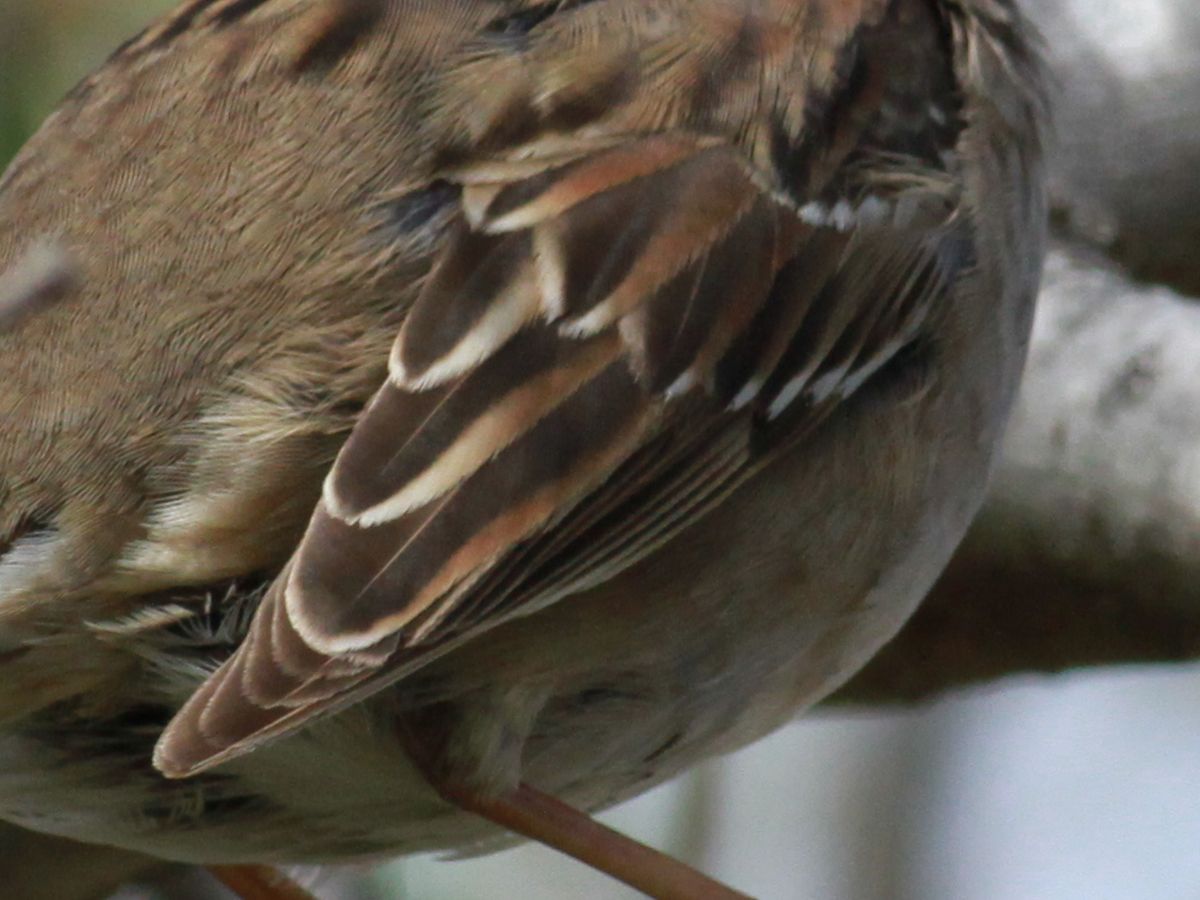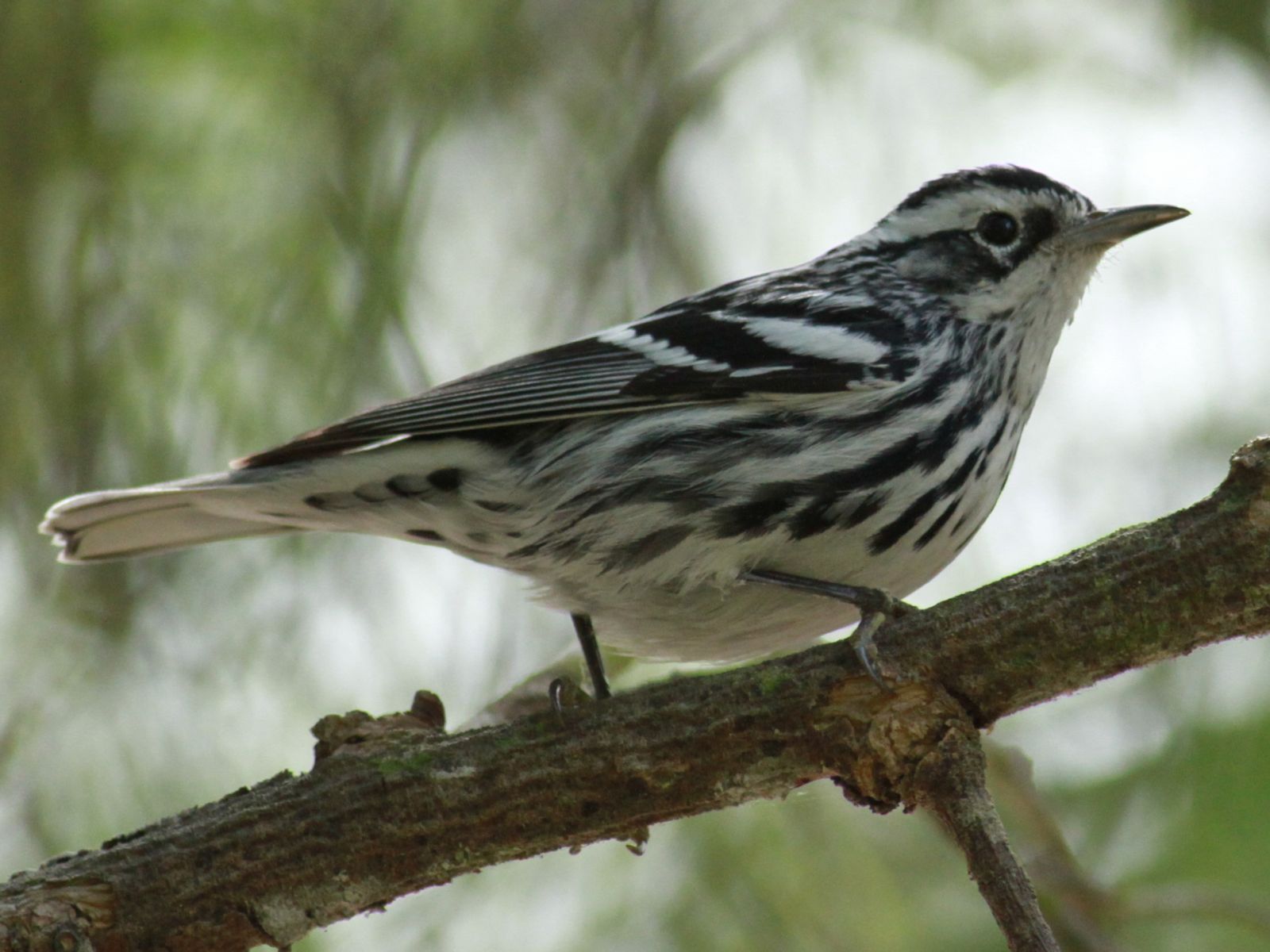[All photographs copyright, Gary Nunn 2013] – I heard the “whit” sound as soon as I stepped out of my vehicle at Fort Rosecrans National Cemetery this morning. Sure enough one of my favorite flycatchers, a Gray Flycatcher Empidonax wrightii, was actively calling from low perches such as the grave markers and a temporary plastic fence. It slowly moved about the cemetery grounds swooping down and resting on the lawn for a few seconds each time it caught an insect. Apart from the physical characteristics, rounded head, large strong bicolored bill, and voice, a soft but quite loud “whit” call, the behavior of this bird immediately reveals its identity. Unique among the Empidonax species it repeatedly dips its tail in the downward direction only. Since the vast majority of birds that move their tails flick them upwards this behavior is easily noticed, and even appears a bit odd! The tail dipping is quite slow too, almost pendulum like. Like other individuals I have encountered in the past, this bird allowed close approach. I would say it is almost tame compared to its high energy congeners! The close looks allowed some nice opportunities for photographs.
Category Archives: Point Loma
Calliope capital – Point Loma
[All photographs copyright, Gary Nunn 2013] – Today the flower beds of “Pride of Madeira” Echium candicans at Fort Rosecrans National Cemetery were alive with hummingbirds. Numbers and diversity went up several notches in the last couple days. I found Anna’s, Costa’s, Black-chinned, and Rufous partaking of the purple boraginaceous flowers. There were probably some Allen’s mixed in there too. My clear favorites however were these Calliope Selasphorus calliope which dived in when the more aggressive species were off taking a break someplace. I photographed at least three different males and one or two females and suspect the true number I saw may even be higher.
Female Calliope are certainly a bit tricky to pick out. Studying the structure and GISS (general impression of size and shape) of the males can be helpful to pick out a female. I think the real key is recognizing the tail size and shape, it looks like someone took a bite out of the middle, together with the impression of tail to body length ratio. They also hold the tail a little cocked some of the time appearing almost like a Christmas tree ornament hanging by a thread. The female photographed below rotated in flight around a flower head in front of me. It showed off the short squared-off tail which, apart from the bold white tips to the outer tail feathers, is mostly black looking. The shape of the central tail feathers (r1) is also diagnostic being wedge-shaped at the end. You might never see these features with the naked eye and binoculars but digital photography provides it!
Springtime crown color of Hammond’s Flycatcher?
[All photographs copyright, Gary Nunn 2013] – I have been looking out for migrant flycatchers lately and was pleased to find this characterful Hammond’s Flycatcher Empidonax hammondii frequenting the “wall” area on the east side of Fort Rosecrans National Cemetery. Based on the San Diego Bird Atlas (Unitt, 2004) the Hammond’s Flycatcher can be found on spring migration here generally a few weeks earlier than the similar looking Dusky Flycatcher – the first clue to its identity!
In addition to the date of observation, several important field characters of Hammond’s Flycatcher can be seen in the photographs below which separate it from the closely similar, and rarer, Dusky Flycatcher. The condition of the plumage is very worn, particularly the wing and tail feathers, and these look faded, almost brownish in fact. This worn condition is characteristic of Hammond’s Flycatcher in spring, and contrasts the relatively freshly molted plumage of Dusky Flycatcher at this time of year. In addition the primary projection extends a great length beyond the secondaries, characteristic of Hammond’s versus a short primary projection of Dusky. Finally the bill is narrow at the base and fine shaped, quite weak looking in fact, and dark blackish colored, characteristic of Hammond’s, and unlike Dusky which has a stronger looking, broader based, and usually bicolored bill.
I was lucky enough to obtain more photographs of this Hammond’s Flycatcher from different angles under cloudy late afternoon lighting. In fact it was raining lightly some of the time. This flat lighting helps illustrate some other important field characters. The overall grey coloration of the face and plain grey lores, giving it an “emotionless” staring appearance, also separates it from Dusky Flycatcher, which has pale-colored lores and a more aggressive appearance. The underparts are also a cool grey color throughout with perhaps only a hint of yellowish wash at the rear, unlike Dusky which is more yellowish in spring. Also important is the grey throat color, again unlike other species with throats that appear whiter. Really, only the back of this bird has a different color – a green tone – being olive in coloration. And there is, urm, maybe the hint of something in the crown color…
Hammond’s Flycatcher is about the second most likely Empidonax to be encountered in San Diego County, after Pacific-slope Flycatcher. I would say around 95%, or more, of Empidonax flycatchers that I find here on the coast are the latter species. There is always something new to learn or questions to be asked about this difficult to identify genus! Which in fact brings me to my question – maybe it is an artifact of lighting or the feathers are wet, or I am losing my marbles – does the bird shown here have dark reddish coloration in the crown feathers?
Double take – Golden-crowned Sparrow in molt
[All photographs copyright, Gary Nunn 2013] – I spotted this interesting looking Golden-crowned Sparrow at the south end of Famosa Slough, Point Loma on 13 March, 2013. It appears to be in prealternate molt showing off plenty of black feathering in the cap. Nice dark colored feathers are growing in about the head, and new, darker, central rectrices appear to be growing in also. In addition the tertials and inner greater secondary coverts, at least four, look very fresh and richly colored, particularly compared to the worn and faded primaries visible in the folded wing.
The mix-and-match feathering of the head really creates a striking looking pattern – I had to take a second look just to convince myself what was going on here! In the lateral crown stripes the mixture of brown and black colored feathers looks pretty unusual. Maybe there is only a short time-frame here in Southern California when we would see such a head pattern in this species but an appearance worth keeping in mind. Golden-crowned Sparrows seem to be thinning out in numbers right now at my favorite spots in Point Loma. At places where I had seen 4 or 5 individuals before, now there are just odd ones and twos present.
Black-and-white Warbler in Point Loma
[All photographs copyright, Gary Nunn 2013] – I made a circuit birding at some favorite spots around Point Loma after a stormy night with rain and gusty winds. There did not seem to be much bird activity anywhere, but finally, once the sun had come out along Silvergate Ave, there at last seemed to be some birds to look at! The best find was this dapper looking male Black-and-white Warbler Mniotilta varia which was busy feeding, nuthatch like, in pepper trees at the junction of Warner and Silvergate Avenue. This would appear to be a first spring male, the retained dusky brown remiges and rectrices contrast quite strongly with the bold black centers of the greater coverts. This bird was quite noisy and sounded the alarm, a repeated harsh “chip” call, at a nearby cat moving underneath the fir tree.

